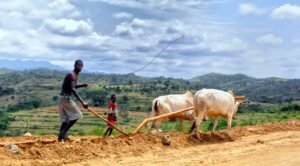Preservation in archaeology is crucial, not just in terms of physical artifacts but also in maintaining the integrity of the archaeological record and the knowledge it provides. If we define it broadly, preservation in archaeology involves
Tag: Archaeology
Feb 09
Guide: Ray Selkirk – The Maverick of Landscape Archaeology
Ray Selkirk was a trailblazing landscape archaeologist who revolutionized how we interpret the hidden past beneath our feet. As a former World War II pilot, Selkirk brought a unique aerial perspective to archaeological surveying, allowing him to recognize subtle patterns in the landscape that often went unnoticed at ground level.
Feb 03
Guide: Magnetometry
Jan 23
Guide – Archaeological Periods in Western Europe
Understanding the archaeological periods across Western Europe is essential for exploring the evolution of human societies from prehistory to the beginnings of written history. These periods are generally defined by shifts in technology, social organization, and the environment, and they often vary slightly from region to region.
Jan 23
Guide – Landscape Features
Jan 23
Guide – Landscape Features: Drainage Gullies
Identifying and Interpreting Field Drainage Gullies When conducting a field walk, it’s essential to be able to identify and interpret the various types of features that appear on the landscape. One common feature you might encounter is a drainage gully—a shallow ditch or channel, often running across fields, which is used to direct water away …
Jan 23
Guide – The Flora and Fauna of Prehistoric Britain
Before we delve into the appearance of humans on the landscape, it’s important to understand the flora and fauna that dominated the earth, and particularly Britain, during the Pleistocene and Holocene epochs. The development of ecosystems in prehistoric times was heavily influenced by the global climatic shifts of the Ice Ages.
Jan 23
Guide – Introduction to Fieldwalking
Fieldwalking is one of the simplest and most accessible forms of archaeological survey. It involves systematically walking over a landscape, searching for surface artifacts—such as pottery, stone tools, and animal bones—that may have been left behind by past human activity. This activity can offer valuable insights into ancient settlements, trade routes, and other key elements of the past.












